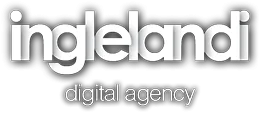Website design is one of the most important factors for the success of any modern business. It’s about creating a visually appealing, functional, and user-friendly website that helps visitors easily find the information they need. In today’s competitive digital world, the right website design can define the success of businesses.
At Inglelandi Digital Agency, we offer tailored solutions designed to fit the needs of every business, delivering results that combine functionality with innovation. Keep reading to find out more!
Why Website Design is Essential
To begin with, website design includes building the structure, layout, and overall look of a site. But it’s not just about aesthetics—it’s also about functionality, user experience (UX), and responsiveness across devices. The goal is to make your website enjoyable and easy to use, adapted to your visitors’ needs, while also helping you achieve your business goals.
Having a website today is essential, as it’s the starting point of your brand’s online presence. Think of it as your digital storefront, the one that allows you to connect with customers across the world. Your website is a powerful platform to showcase your products, services, and vision while giving customers an easy way to connect with you directly. At the same time, it builds trust and credibility for your brand and supports essential marketing strategies like SEO to boost your visibility on search engines. In today’s digital world, where most customer decisions begin online, your website stands as the cornerstone of your business growth.
Interested in building a website? Request a quote HERE!
Factors That Affect the Cost of Website Design
The cost of website design can vary depending on several factors:
1. Type of Website: A simple corporate site will cost less than an e-shop or a site with complex functions like booking forms, payments, or product management.
2. Customization: A fully customized design, tailored to your needs, requires more time and budget than using templates.
3. Number of Pages: The more pages your site has, the higher the cost.
4. Designer’s Experience: The professionalism and expertise of the designer or team also affect pricing.
5. Content & Management: Creating text, images, videos, and optimizing them for SEO increases costs but is vital for visibility.
6. Features & Functions: Extra tools like maps, booking systems, or online payments raise complexity and cost.
7. Support & Maintenance: Ongoing support, upgrades, and fixes are crucial after launch.
8. Platform & Technology: The choice of CMS or platform (e.g., WordPress, Magento) impacts the time and budget needed.
Our Services
If you’re looking for a partner to build and design your website, you’re in the right place. With more than 24 years of experience, my team can boost your business with professional website design and digital marketing services. At Inglelandi Digital Agency, I create websites that are fast, functional, SEO-friendly, and built for growth.
Conclusion
In short, effective website design is not just about looks. It’s a multi-layered process that combines user experience, functionality, and strategy. Therefore, by understanding the cost factors and making the right choices, you can create a website that boosts your brand, attracts the right customers, and helps you stand out online.
Need help? My team is ready to guide you! Contact us today!
Discover our Social Media HERE!
Want more marketing insights? Click HERE to explore all our blog posts!
Frequently Asked Questions (FAQ)
1. How much does website design cost?
It depends on the type of site and the features you need. You can start with a simple website or go for a full e-shop.
2. How long does it take to build a website?
Usually, a few weeks, depending on complexity and content volume.
3. Can I update my website on my own?
Yes! With platforms like WordPress, you’ll have full control and can make updates easily.
4. Do I need SEO for my new website?
We highly suggest it. Without SEO, your site will struggle to rank high on Google and reach new customers.
5. Why choose Inglelandi for my website design?
Because we combine local presence in Chania with international experience. We design websites that are not only visually appealing but also functional, effective, and Google-friendly.
